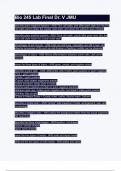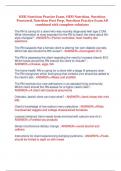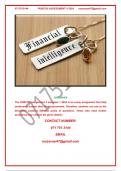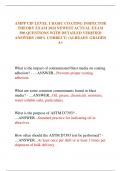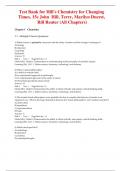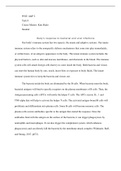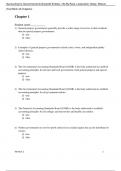Exam (elaborations)
Bio 245 Lab Final Dr. V JMU Questions with 100% Actual correct answers | verified | latest update | Graded A+ | Already Passed | Complete Solution
Bio 245 Lab Final Dr. V JMU Questions with 100% Actual correct answers | verified | latest update | Graded A+ | Already Passed | Complete Solution
[Show more]
